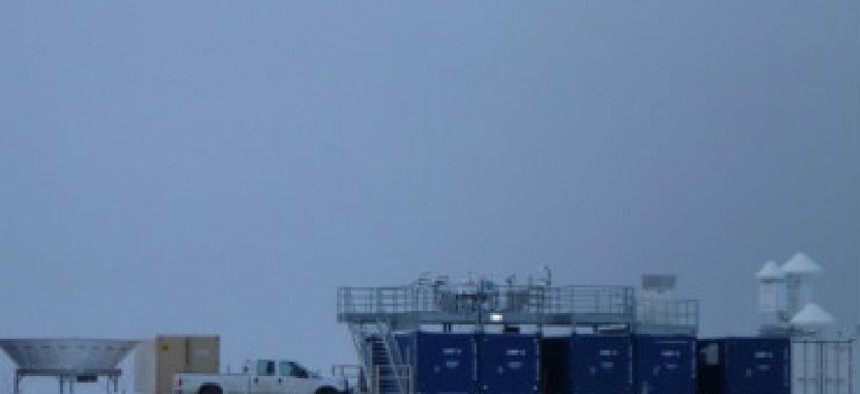Drones and weather balloons team up in Arctic tests

A national laboratory paired drones and weather balloons to try to improve Arctic weather data collection.

Equipment at the climate measuring station in Oliktok Point, Alaska. (Photo courtesy NOAA)
Arctic tests that paired drones and weather balloons could help improve data collection and provide a model for agencies looking to operate unmanned aerial systems in extreme climates.
Researchers from Sandia National Laboratory combined 13 foot-tall tethered weather balloons with free-ranging weather-data-collecting octocopter aerial drones in a restricted airspace test site that extends from Alaska's Prudhoe Bay almost to the North Pole.
The test site is a 700-mile-long, 40-mile-wide stretch of airspace from Oliktok Point – the northernmost point of Alaska's Prudhoe Bay. The area was put under the stewardship of Sandia, the Department of Energy and the Federal Aviation Administration in 2015 and serves as the base of operations for Sandia's Atmospheric Radiation Measurement Climate Research Facility.
The tests, according to the lab, are not only important in developing more accurate methods of collecting weather information, they're also essential in getting data on operating drones in extreme climates, which has implications for the technology's use in national security applications in the same region.
"Operating UASs in the remote, harsh environments of the Arctic will provide opportunities to harden the technologies in ways that are directly transferable to the needs of national security in terms of robustness and reliability," Jon Salton, a Sandia robotics manager, said in a statement. "Ultimately, integrating the specialized operational and sensing needs required for Arctic research will transfer to a variety of national security needs."
The drones and balloons, according to researchers, complement one another in their ability to gather data. Drones are more readily launched from remote locations, don't require helium to fly and can be sent to specific areas, while balloons can stay aloft for hours, providing more constant data.
Ultimately, the researchers said, the data collected by both can be fused in different ways to serve science and national security communities.
The lab said it is currently talking with other federal agencies about the use of the restricted Arctic airspace to conduct experiments and exercises without the risks of using human piloted aircraft.
A Sandia spokeswoman declined to specify what agencies the lab was talking to, as those talks were "preliminary."
Flights for search-and-rescue exercises, data collection on ice or atmospheric conditions, or testing technology, would otherwise be very difficult to conduct, the researchers said.





